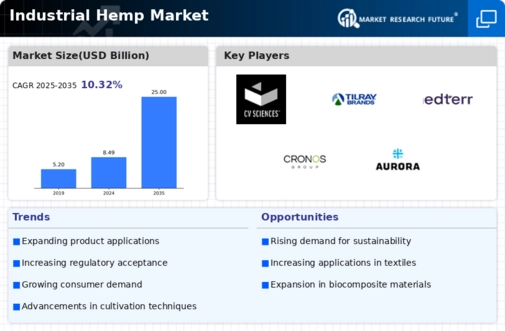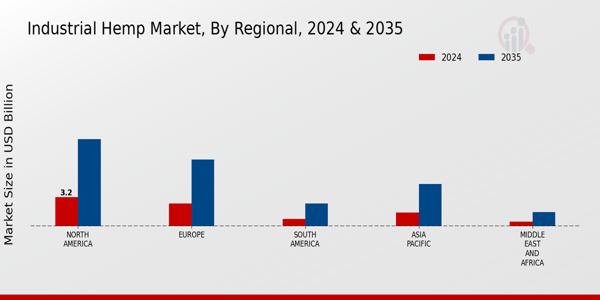Market Share
Industrial Hemp Market Share Analysis
In the dynamic and burgeoning Industrial Hemp market, companies deploy a range of strategic approaches to assert their presence and secure a share of the market. A primary strategy revolves around product differentiation, with manufacturers aiming to distinguish their offerings amidst a growing array of hemp-based products. This could entail focusing on specific applications of industrial hemp, such as textiles, building materials, or biofuels, and highlighting the unique qualities and benefits of their products. By emphasizing factors like sustainability, durability, and versatility, brands can attract consumers and businesses seeking eco-friendly alternatives to traditional materials.
Segmentation of the target market is another pivotal aspect of market positioning in the Industrial Hemp industry. Companies often tailor their products and marketing efforts to cater to distinct customer segments with varying needs and preferences. For example, some brands may target consumers interested in hemp-derived CBD products for health and wellness purposes, while others focus on industries like agriculture or manufacturing seeking hemp-based solutions for sustainable production practices. By understanding the specific requirements of different market segments, Industrial Hemp companies can effectively position their products to address niche markets and capture a loyal customer base.
Pricing strategies play a significant role in shaping market positioning within the Industrial Hemp market. Brands may position themselves as premium options, commanding higher prices by emphasizing factors such as organic cultivation practices, quality certifications, or superior product purity. Alternatively, some companies adopt a more competitive pricing approach to appeal to cost-conscious consumers or gain market share in price-sensitive segments. Strategic pricing decisions are crucial for balancing profitability with market penetration objectives and maintaining competitiveness in the rapidly evolving Industrial Hemp industry.
Distribution channels are critical considerations for Industrial Hemp producers seeking to expand their market share. Companies must identify and leverage distribution partners and channels that align with their target market and business objectives. This could involve partnering with retailers specializing in natural and sustainable products, online platforms catering to health-conscious consumers, or distributors serving specific industries like construction or cosmetics. Additionally, collaborations with complementary businesses or influencers can help Industrial Hemp brands reach new audiences and expand their distribution networks effectively.
Brand image and reputation are fundamental drivers of market positioning within the Industrial Hemp industry. Established brands with a track record of quality and reliability often enjoy a favorable reputation among consumers and businesses, facilitating market penetration and fostering brand loyalty. However, newer entrants or niche brands can differentiate themselves by crafting compelling brand narratives, emphasizing their commitment to ethical and sustainable practices, and engaging with customers through storytelling and transparent communication.
Innovation and product development are essential elements of market positioning in the Industrial Hemp market. As technology advances and consumer preferences evolve, companies must innovate to stay competitive and capitalize on emerging trends. This could involve developing new hemp-based products, improving existing processes to enhance efficiency and sustainability, or exploring novel applications of industrial hemp in industries like healthcare, agriculture, or manufacturing. By continuously innovating, Industrial Hemp companies can differentiate themselves from competitors and maintain their relevance in a rapidly changing market landscape.
Promotional campaigns play a vital role in raising awareness and driving sales within the Industrial Hemp market. Brands invest in marketing initiatives such as digital advertising, social media campaigns, and educational events to connect with consumers and stakeholders and reinforce their market positioning. Promotions highlighting the environmental benefits, health advantages, and versatility of industrial hemp can resonate with target audiences and influence purchasing decisions. Additionally, educational campaigns that dispel myths and misconceptions about hemp and CBD products can help build trust and credibility within the market.
Customer service and experience are paramount in market positioning within the Industrial Hemp industry. Brands that prioritize excellent customer service, whether through responsive support channels, educational resources, or personalized interactions, can differentiate themselves and foster customer loyalty. Positive experiences with the brand can lead to repeat purchases and word-of-mouth recommendations, contributing to market share growth and long-term success in the Industrial Hemp market.









Leave a Comment